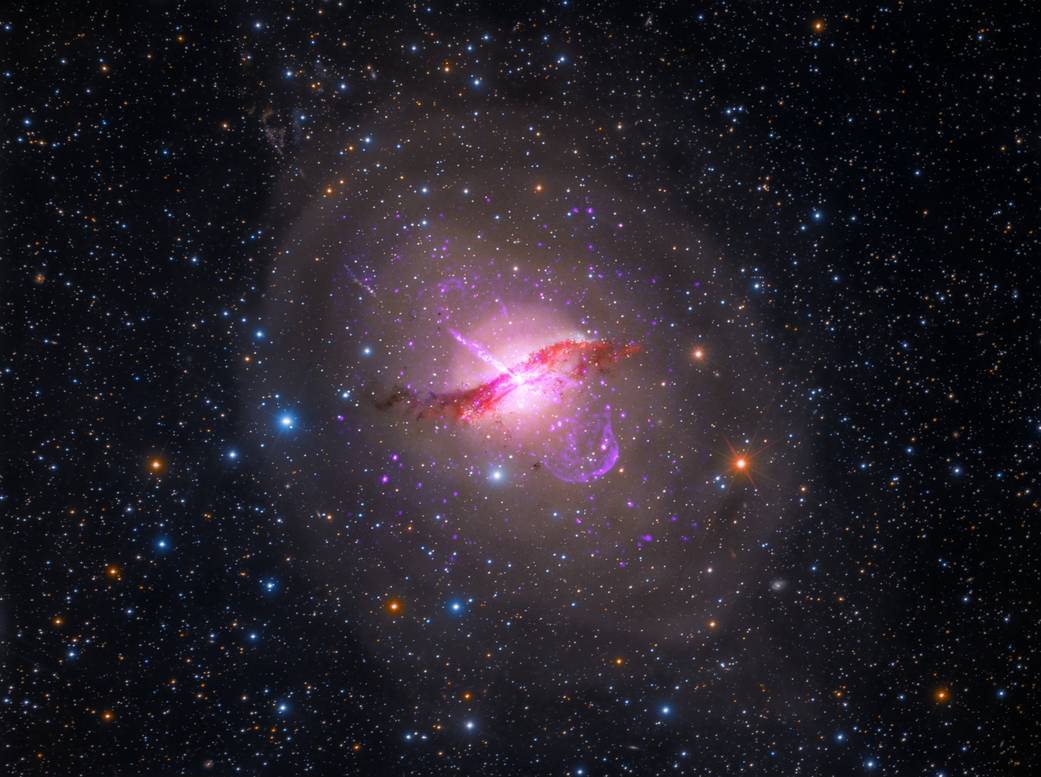Astrophysical jets are formed at all speeds

Matter outflows in the form of jets are observed in astronomical systems at fast, medium and slow speeds. The fastest jets are highly relativistic, namely travel very close to the speed of light. The origin, as well as many properties of the jets, is uncertain. One of the puzzles, that jet velocities seem to have a bi-modal distribution – some very fast and others slow, with a gap in velocities in between, has long challenged experts. Now, a team of researchers has re-examined the data and think they have found a simple explanation.
In many different galactic and extragalactic systems, emission of matter is commonly observed in the form of jets. The speed of these jests varies significantly. Alongside relatively slow jets associated with neutron stars or binary star systems, very fast, relativistic jets are seen at speeds very close to the speed of light. The fastest known jets are associated with a phenomenon known as “gamma-ray bursts”. This phenomenon is characterized by an initial flash of gamma rays, lasting for a few seconds, in which a strong emission of gamma radiation is visible. It is then followed by an “afterglow” lasting a much longer time of hours, days and even months. During this phase, the emission subsequently fades and is observed as lower wavelengths, X-rays, ultraviolet, optical, infrared, and radio frequencies at very late times.
Beyond the question of why jets from these objects are so rapid, it is a seemingly unrelated mystery what happens during the intermediate period, that lasts hundreds to thousands of seconds, in which the emission either fades or remains constant. In some cases, after a few tens of seconds, X-ray emission decays considerably, as would be expected from a relativistic burst colliding with the matter and radiation that exist in the space between the stellar systems in a galaxy. However, in about 60% of the observed cases, the visible emission doesn’t fade but rather remains constant. This observation has long been a source of confusion to researchers, and no convincing explanation has been found for it since this phenomenon was discovered approximately 18 years ago.
Researchers have now proven 1 that this visible, perpetual emission is a natural consequence of jet velocity, which is significantly lower than what was commonly assumed, and fills the gap between velocities measured from different sources. In other words, lower initial jet speed can explain lack of decay and more visible and perpetual emission. The researchers showed that previous results, from which high speeds were deduced in these objects, are not valid in these cases. In doing so, they proved that jets are formed in nature at all speeds.
One of the main open questions in the study of gamma ray bursts is why in a significant percentage of cases, X-rays, which are visible for up to several days, do not fade for a long time. To answer this question, the researchers began a careful mapping of the data, which are numerous but scattered and “noisy”. After thorough literature research, they created a sample of high-quality data. Following an examination of explanations for the phenomenon in existing literature, they found that all existing models, without exception, make additional assumptions that are not supported by the data. What is more significant is that none of the models offered a convincing explanation for the clean data.
The researchers returned to the basic model and tried to understand which of the basic assumptions isn’t valid. They discovered that changing just one assumption, about the initial speed of the jets, was sufficient to explain the data. The researchers continued and examined the data that led other astrophysicists to conclude that the jets must be highly relativistic, and discovered that none of the existing arguments was valid in the cases they studied.
If, indeed, the researchers are correct, the results have far-reaching implications in the understanding of the physical processes that produce jets. The origins of the phenomenon still aren’t fully known, but it is clearly related to the collapse of a star (or a pair of stars) into a black hole. The research results tell us about these mechanisms, as well as the type of stars that end their lives in a way that produces strong gamma radiation.
References
- Dereli-Bégué, H., Pe’er, A., Ryde, F. et al. (2022) A wind environment and Lorentz factors of tens explain gamma-ray bursts X-ray plateau. Nat Commun doi: 10.1038/s41467-022-32881-1 ↩